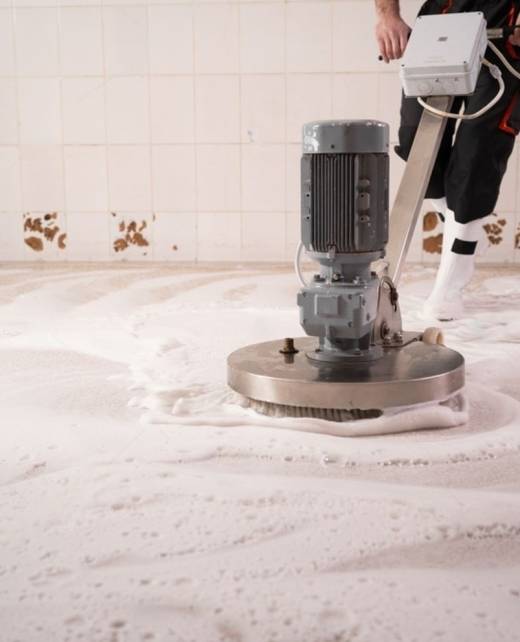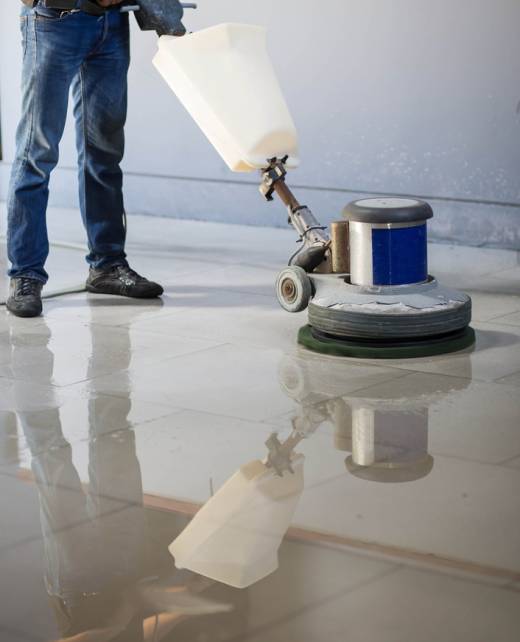Coefficient of Friction

Understanding Coefficient of Friction
Coefficient of friction (COF) is a mathematical term used to describe the effect of dragging one substance (shoe sole material) over another (flooring surface).
This coefficient measures the relative ability of various surfaces to resist the sliding or slipping of the selected material. In ordinary applications, the slip resistance of ceramic tile is comparable to that of most hard-surface flooring materials, and it is significantly better than some.
Unglazed tiles are more slip-resistant than glazed tiles and are commonly recommended for areas subjected to high water spillage. Irregular or textured surfaces can be confused with slip-resistant surfaces. Just because a glazed tile is rough or not glossy doesn’t necessarily mean it is slip-resistant. Even irregular or textured unglazed tiles can become slippery when wet, allowing surface hydroplaning.
Many glazed and unglazed tiles can feature abrasive grit on their surface, substantially increasing their slip resistance. These tiles are commonly installed in public areas with direct outdoor access. Corundum grit surfaces can introduce an element when traffic acts upon them, which will add to the floors’ deterioration and can be too slip-resistant when excessive.
Carborundum grit, which appears to be black reflective speckles on the surface of an unglazed tile, will wear flat and become ineffective. Please Note that any tile or other hard-surface flooring can become slippery when wet or improperly maintained. Slip resistance varies with the many types of footwear, soiling, and cleaning regimen.
Due to a suction effect between the tile surface and sole materials, polished wet surfaces give false slip-resistance readings. Even under dry conditions, the testing of polished surfaces is questionable.
Avoid raising the COF by using coatings—they will peel, blister, discolour, and mar, creating a difficult floor surface to maintain and providing unsatisfactory slip resistance.
Slip Resistance
The anti-slip qualities of the tile alone do not make walking safe in risky situations. Many factors are involved and taken into consideration at the planning and installation stages:
- Choice of tile
- Analysis of the environment and the conditions of use
- Checking for irregularities
- Slopes
- Configuration of non-traffic and traffic areas, adjoining floors of different friction coefficients
- Proper fixing
- Proper maintenance and cleaning

The United States ANSI method (ASTM C1028) gives the static friction coefficient of the surface using a force gauge (horizontal dynamometer) pull meter.
- Equal to or greater than .60 — Excellent friction.
- Equal to or greater than .50 — Adequate.
- Equal to or less than .40 — Caution necessary.
The USA Occupational Safety & Health Administration (OSHA) currently recommends that the static COF be at least 0.5 for all walkway surfaces under wet and dry conditions. The Americans with Disabilities Act (ADA) recommends a dry static COF of 0.6 on any flat or horizontal surfaces, wet and dry, but 0.8 for any inclined or ramp areas.
Coefficient of Friction (COF) is the friction force opposing sliding motion divided by the force normal to the surface.
People walk differently (most people demand a consistent COF of between 0.25 – 0.3 when walking normally), and long, fast strides demand higher friction. Although slippery surfaces or steep slopes provide low COF, we often perceive the potentially dangerous floor, shorten our stride, and walk slowly.
Including the presence of contaminants, a 0.6 COF should be demanded for safety.
There are millions of combinations possible: several shoe materials and design features, floor materials, surface profiles, degrees of wear and cleanliness, type and amount of contamination, walk patterns and angle of contact, body weight, vertical force, rate of weight application, lighting and surface perception, eyesight, inebriation, medication, etc.
It’s important to realize that the COF testing is flawed. The current testing methods, both in the laboratory and in the field, are flawed. In addition, so many other factors and shoe materials are used in real pedestrian traffic conditions that the results are inconclusive at confirming how a surface or tile will provide adequate slip-resistance, especially once it has been down and subjected to periods of differing wear abrasion and daily maintenance regimens.
The commonly specified and often misunderstood value of 0.60 Static Coefficient of Friction (SCOF), determined by the ASTM C1028 test method, has been superseded by a new method – The Dynamic Coefficient of Friction (DCOF) method, and a new threshold value, all of which can be found in the 2012 edition of ANSI A137.1, the American National Standard Specifications for Ceramic Tile.
The Dynamic Coefficient of Friction (DCOF) method determines DCOF under wet conditions using slightly soapy water, specifically water with 0.05% Sodium Lauryl Sulfate (SLS) in solution. SLS is a wetting agent that allows water to spread in a thin film, similar to when a slip occurs or when a floor is being cleaned.
This 2012 version states that tiles suitable for level interior spaces expected to be walked upon when wet shall have a wet DCOF of 0.42 or greater when tested per the procedure in the standard (i.e., per the DCOF methodology).
Get In Touch
We are committed to the best quality in products and services for your anti-slip floor care safety and specialized cleaning needs, for both the commercial and residential sectors.


